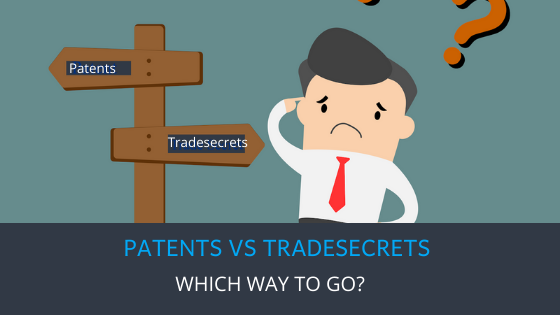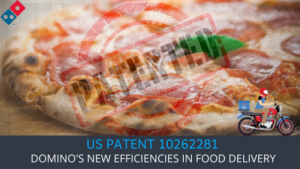
Patents Vs Trade Secrets | Choose Wisely!
‘Patents are expensive, why don’t we just trade secret everything?’ If this is a thought and cost cutting is something you’re looking to do, read on. It is no secret that investing in patents is an expensive affair. At the same time, a rich IP portfolio is very advantageous. While considering the financial aspects, it’s important to explore ways to manage patent costs effectively without losing out on the benefits of a strong IP strategy. Here, we talk about Patents, Trade Secrets, and Defensive Publications as IP tools to help you decide which one to be used in which scenario.
Trade Secret:
A trade secret is any information that’s unique to your enterprise and gives you an advantage over your competitors. As a company, this could include formulae, technical data, code, manufacturing data, customer information or any other technical, scientific information that a company may take steps to keep secret. To keep such things as a trade secret does not require any money however you need to take care of certain things to maintain the secrets (as described later).
Defensive Publication:
A defensive publication is a disclosure of invention by the inventor to the public. This disclosure allows the inventor to safeguard the freedom to use this invention by preventing others from patenting it.
In the event a patent is sought to be obtained for the same or similar invention, a pre-dated defensive publication will act as a deterrent to the issue of such patent.
Put simply, any printed or electronic publication that fully describes an invention and was published before the filing date of a patent application can disqualify that patent from being granted.
Patent:
A patent is an exclusive right granted by a government for an invention, which is a product or a process that provides, in general, a new way of doing something, or offers a new technical solution to a problem.
In order for an invention to be patentable,
- It must be new
- It must involve an inventive step, one that is non-obvious to a person skilled in the field
- And it must be capable of industrial application
Patents protect your inventions for 20 years during which you enjoy a monopoly in the market place. However patent protection is country specific. So you enjoy the monopoly within the geographic boundary that your patent has been granted in. As a patent owner, you can do the following:
- You have the right to prevent others from using it, abandon it, sell it.
- You may also assign it or license it in totality or for a specific purpose.
So, how does one choose what kind of protection to use for an invention?

Trade Secrets
There are three vital things to do when you think of protecting something as a trade secret:
- Define your trade secrets and maintain an inventory of the trade secrets of your organization.
- Make your employees aware of the fact that these are trade secrets. Ensure confidentiality and non-disclosure agreements are in place.
- Do not make any information about your trade secret publicly available.
In line with these precautions, it’s critical to implement strategies to safeguard intellectual property in transition periods, such as when a co-founder or key employee departs.
Here are some questions that will help you choose the right type of IP protection: “Patents Vs Trade Secrets”.
How easy is it to reverse engineer your invention?
The thumb rule of trade secret protection is to use it when inventions are impossible or require a very hard degree of effort to be reverse-engineered. By its very nature, a trade secret is vulnerable to reverse engineering because it only remains secret until it’s a secret! So, patent protection for inventions that can be easily reverse-engineered is more appropriate. How easy reverse engineering is; depends on the nature of your invention.
Mechanical inventions
Products that are a result of this kind of innovation are fairly easy to reverse engineer. With anything that is easy to reverse engineer, trade secret protection becomes completely ineffective.
Chemical Compositions, Software & Electronic Inventions
While these are not as easy as mechanical inventions, with a little time and effort these products can also be reverse-engineered. Read this to understand how!
Processes
These are quite difficult to reverse engineer. Since processes are business-specific, they are easier to keep within the company. There is a long list of food products that have managed to keep their recipes or chemical formulae as trade secrets for many years e.g. Coca-Cola, Listerine, Twinkies, Krispy Kreme Donuts, WD-40, etc. Google Search Algorithm and NewYork Times criteria for creating the best Sellers list are two processes that serve as great examples for trade secrets.
How beneficial is it to your company to keep your invention a secret?
In a cut-throat market place, competition is everything. A major aspect to consider if keeping your invention a trade secret gives you a clear competitive advantage. There are six factors of competitive advantage: price, quality, selection, speed, turnaround and service. Does your trade secret serve or help further any of these purposes?
Who are your likely competitors and how motivated will they be to access your invention?
To choose the right kind of IP protection, it is important to understand your competition. The motivation of your competition to access your invention will be directly proportionate to your market position. So, having a clear understanding of your market, your product and the path of your company will help with answering this question.
Will the invention be useful after 20 years?
One of the reasons you choose trade secret protection over patent protection is to extend the lifetime of protection that it offers. While patents offer you protection or a monopoly of 20 years; trade secrets can last you a lifetime. Although trade secrets are less of a strain on the pocket procedurally, keeping them a secret always comes at a cost. Being able to gauge the usefulness of your invention after 20 years is a great tool to decide how you would like to protect it.
Patents
The following is a list of reasons to patent and questions that will help you evaluate the patentability of an invention:
Competitive Edge
A business usually wants to patent an invention to have a competitive edge, market power, and as a tool to earn more money. Hence the first question to ask is whether there is a market for the invention, the technology, or products incorporating it?
Need in the Market
If there is a market for your invention, what are the available alternatives to it, and how do they compare with your invention? Check multiple factors such as utility, price, availability, customer satisfaction etc.
Utility of Invention
Once you have data on the market space, ask if the invention is useful for improving an existing product or developing a new product? If so, does it fit in with your company’s business strategy?
Fund Raising
Another big reason for choosing to patent is using it as a tool to raise funds and attract potential investors. Before you choose to spend resources on a patent, check if there are potential licensees or investors who will be willing to take the invention to market?
New Revenue Stream
If you are looking to patent to sell your invention or as a tool to add a new revenue stream by licensing your patent, ask how valuable will the invention be to your business and to competitors? Also, just how easy is it to reverse engineer your invention from your product or to “invent around” it? Is reverse engineering easy enough to tempt others, especially competitors, to invent and patent what you have invented?
Sales & Profit
Purely as a tool to increase sales, profits, and revenue, do the expected profits from an exclusive position in the market justify the costs of patenting?
Commercial Utility
Lastly, what aspects of the invention can be protected by one or more patents, how broad can this coverage be and will this provide commercially useful protection?
Defensive Publications
If you don’t want to walk down either the Trade Secret or the Patent route, you may consider a Defensive Publication. By making a defensive publication, your invention is neither a trade secret, nor patentable (if not done so within the time frame offered under certain jurisdictions). A defensive publication may be ideal for smaller inventions or inventions which do not serve your company greatly, financially. This approach is particularly relevant for software startups strategizing their IP approach, where the decision between patenting and keeping a trade secret is critical.
What a defensive publication does is safeguards your right to continue doing what you are doing or at the very least opening yourself out to challenge patents. When you make a defensive publication, you essentially disallow someone else from filing a patent. Or giving you the arsenal you need to hold a patent invalid because you published first. With a defensive publication (made in the USA), you are given a one year grace period to file a patent based on such publication.
A Quick Recap | Patents Vs Trade Secrets
To summarise, here is a tabular comparison of “Patents Vs Trade Secrets”.
| Factors | Patents | Trade Secrets |
| Reverse Engineering | Not a factor that needs to be worried about since you make public disclosure with a patent, and are granted full rights. | The easier it is to reverse engineer your invention, the riskier it is to protect it as a trade secret. |
| Cost | Expensive mechanism of protection. Involves attorney fee for drafting and filing and official fee for obtaining a patent. | In theory, a trade secret is free. Practically, keeping it a well-guarded secret may cost your company a certain sum of money. |
| Life of the invention | If your invention can stand the test of time and still be relevant after twenty years, this is not the right protection. | The benefits of keeping a trade secret are directly proportionate to the life of your invention. |
| Funding and Marketing | Better option to obtain funding as ideas become easier to explain to investors because of public disclosure. | Difficulty in explaining the invention to an investor for fear of divulging a secret may prove to be a hurdle for funding. |
| First Mover Advantage | You lose out on the advantage of being an initial significant occupant as disclosure through a patent application can help competition enter the same market space slightly quicker than otherwise. | With choosing to protect your invention as a trade secret, you can extend this advantage to a slightly longer time as your competition will have no information on your invention in the public domain before its market entry. |
Conclusion
Choose wisely when deciding how you want to protect your ideas/inventions. Trade secrets are a great way forward and help you save your resources. Use these resources in patenting your best inventions. They don’t always have to cost a fortune. Here’s a guide to cost-effective patenting.
Like all things, life and business, IP protection is also all about balance. Trade secrets and patents can sometimes be used in a manner that is more complimentary than the contrary. IP strategy is personal to a Company and its journey. Hopefully, this shall make you choice easier: Patents Vs Trade Secrets.
Note: The preceding is general business advice and not to be construed as legal advice. IP laws vary by country and retaining licensed legal counsel is advised to confirm this information. Any expressed or implied opinions are of the author and do not necessarily reflect the views of Triangle IP or any other entity who might be associated with the presenter. We hope this content is helpful to you, but should not be relied upon without confirming the advice and accuracy with local legal counsel. Any comments or inquiries are not confidential so please discuss your issues directly with counsel.






No comment yet, add your voice below!